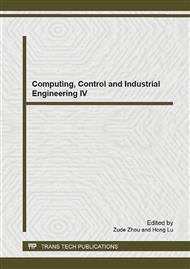p.577
p.581
p.585
p.589
p.594
p.598
p.602
p.606
p.613
Reverse Engineering and the Application of Reverse Engineering in Mould Design and Manufacture
Abstract:
Reverse engineering, as the advanced absorption technique, playing a vital role in shortening the design time of products and providing technological guarantee for modeling design of products, is the latest hotspot in the present technological field. The application principle of this technology is to turn the primary physical modeling into design modeling through the transformative platform. It serves as both the technological foundation in intensifying the engineering quality and the information for accurate analysis of modeling design data and processing of modeling profile. Coupled with modernized design concept and improved creativity , reverse engineering capitalize fully on CAE/CAM/CAD technology to integrate the current resources for information supply of manufacturing accurate modeling. The practice of reverse engineering could be conducive to bring the preference of measuring equipment into full play so as to improve the data processing ratio in CAD/CAM system and advance the level of industrial design for the purpose of manufacturing automation.
Info:
Periodical:
Pages:
594-597
Citation:
Online since:
October 2013
Authors:
Keywords:
Price:
Сopyright:
© 2013 Trans Tech Publications Ltd. All Rights Reserved
Share:
Citation:


